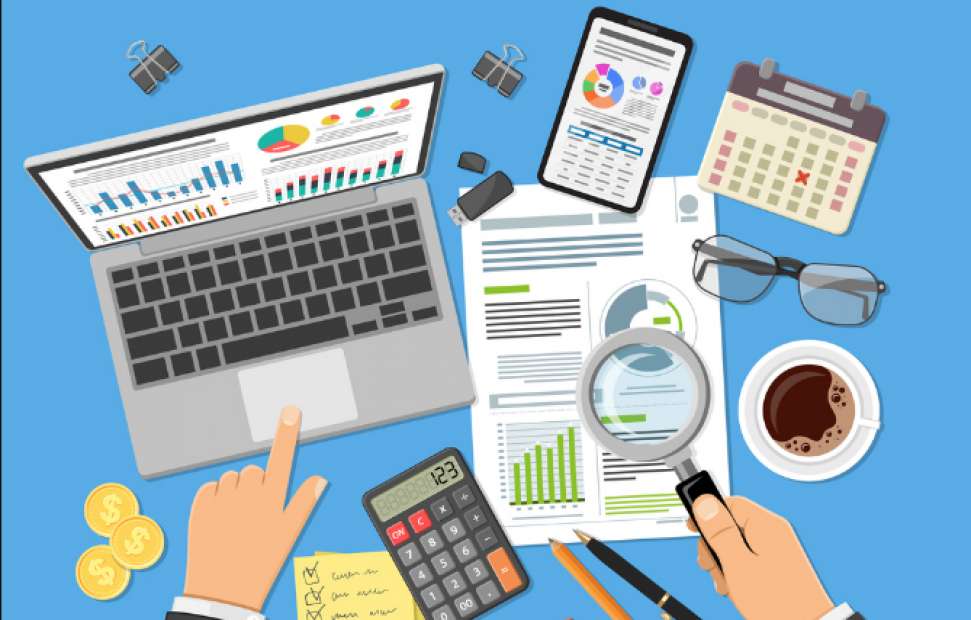Tools and software for financial analysis

Exploring the landscape of financial analysis, the pivotal role of instruments and software cannot be overstated. These essential aids have revolutionized how professionals and enthusiasts alike approach financial scrutiny and decision-making.
From simplifying complex data interpretations to enhancing predictive accuracy, the right set of tools can significantly elevate the quality and efficiency of financial evaluations. This blog aims to illuminate some of the most effective and versatile options available today.
The Foundation of Financial Analysis
The cornerstone of any robust financial analysis lies in the adept use of specialized instruments. These resources afford analysts the necessary leverage to decode the intricacies of financial data, thus paving the way for informed strategic decisions.
In selecting the right applications, it is essential to factor in the scope of analysis, ease of use, compatibility with other systems, and the depth of insights required. Not all software is created equal, and discerning the most fitting option is crucial.
This segment introduces a brief overview of the diverse categories available, setting the stage for a deeper dive into specific recommendations.
An understanding of these foundational tools forms the rudimentary building block upon which complex analysis is constructed.
Essential Software for Comprehensive Evaluations
MS Excel remains a universally acknowledged powerhouse for undertaking preliminary financial evaluations. Its versatility in data manipulation and analysis provides a solid groundwork for further detailed investigation using more advanced software.
However, for those seeking deeper insights and more sophisticated forecasts, software like Tableau offers unparalleled data visualization capabilities, transforming raw data into visually appealing and comprehensible formats.
Quicken and QuickBooks, on the other hand, cater to the operational side of finance, streamlining accounting processes and facilitating effortless financial management and reporting.
Advanced Tools for Specialized Analysis
For professionals delving into market dynamics and investment opportunities, Bloomberg Terminal and Thompson Reuters Eikon stand out. These platforms provide real-time financial news, data, and analytics, supporting high-stakes decision-making.
R programming and Python have emerged as critical tools for statisticians and data analysts, offering powerful libraries for statistical analysis and data visualization to model financial scenarios accurately.
Financial modeling software like Argus provides niche solutions for real estate market analysis, demonstrating the sector-specific utility of certain applications.
Each of these tools fills a unique slot in the financial analyst’s toolkit, enabling a tailored approach to various facets of financial scrutiny.
The importance of cybersecurity in financial analysis software is also paramount, as data integrity and protection are critical considerations.
Integrating Tools for Maximized Efficiency
Choosing the right tool is only half the battle; effective integration into existing systems amplifies their utility. Seamless data flow between software facilitates a holistic view of financial health and fosters a more dynamic analytical process.
The advent of cloud-based services has simplified the integration of various applications, allowing for greater flexibility and accessibility.
APIs play a significant role in this integration, enabling disparate software to communicate and share data effortlessly.
Efficiently integrating tools into a cohesive system can unlock new levels of insight and efficiency in financial analysis, turning disparate data points into a coherent narrative.
The Future of Financial Analysis Tools
The landscape of financial analysis tools is ever-evolving, with AI and machine learning poised to redefine the capabilities of financial software. Predictive analytics, automated decision-making, and advanced risk assessment models are on the horizon.
The adoption of blockchain technology promises enhanced security and transparency in financial transactions and record-keeping.
As technology progresses, we can expect a continual refinement of these tools, making them more intuitive, robust, and indispensable to financial analysis.
Staying abreast of these developments is crucial for professionals seeking to maintain a competitive edge in a rapidly changing field.
Selecting the Right Tools for Your Needs
While the plethora of options may seem overwhelming, understanding your specific requirements and objectives is key to selecting the most suitable tools. Considerations should include the complexity of tasks, required features, budget constraints, and user proficiency levels.
Trial versions and demos can be invaluable in this selection process, offering a hands-on opportunity to evaluate the software's fit for your needs.
Consulting online forums and reviews can provide additional insights from actual users, helping to paint a clearer picture of the tools' performance in real-world scenarios.
Ultimately, the goal is to find a synergy between your analytical needs and the functionalities offered by the tools, striking a balance between sophistication and usability.
In the quest for financial clarity and insight, the judicious selection and application of appropriate analysis tools are indispensable. As we have explored, a wide range of options, from basic software to advanced platforms, serves various needs and preferences within the financial analysis domain. By carefully assessing these options and integrating them effectively, professionals can enhance their analytical capabilities, fueling better strategic decisions and fostering financial success. Keeping pace with technological advancements in this area will ensure that your financial analysis remains cutting-edge, insightful, and above all, impactful.

Related